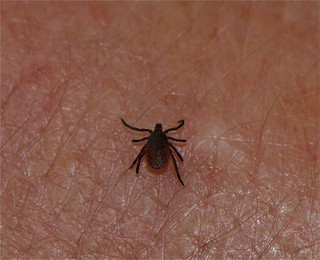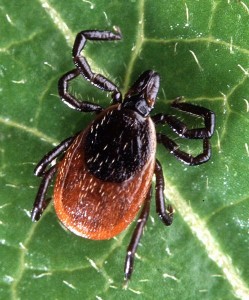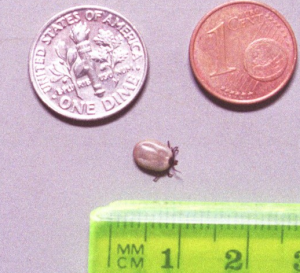How to Prevent Lyme Disease
By Chris Williams on June 17, 2014.

Black Legged (Deer) Tick
 With the tough recent winter now just a faded memory, people are beginning to enjoy the great outdoors again as we’re heading towards summer. But as we come out of hiding to bask in the heat, so too do the ticks that carry Lyme disease.
With the tough recent winter now just a faded memory, people are beginning to enjoy the great outdoors again as we’re heading towards summer. But as we come out of hiding to bask in the heat, so too do the ticks that carry Lyme disease.
The majority of Lyme disease transmissions are reported between June and August, when people pursue outdoor activities like hiking, hunting or gardening – anything that invades the natural habitat of deer ticks. To keep you safe, here are some Lyme disease prevention tips straight from the experts at Colonial Pest.
What Causes Lyme Disease?
Lyme disease is caused by a spirochete bacterium Borrelia burgdoreri and is transmitted by the bite of the black-legged (deer) tick (Ixodes scapularis).
Adult black-legged ticks are active between the fall months of October through December and again in March through June. I’ve had many encounters with these throughout the past several years in the performance of my job as a pest control service technician. Most of the time, I’ve picked up ticks in the foundation gardens around people’s homes!
Adult black legged ticks, while small in their own right at 1/8” in length, are pretty easy to spot. However, the nymphal stage of the black-legged tick is exceedingly small at 1/32”. These nymphal ticks mostly responsible for the transmission of most cases of Lyme disease simply because they’re easy to miss.
This life stage is most active between May and August, which correlates with the peak Lyme disease transmission rates every year.
Lyme Disease Facts: Data From MA & NH Transmissions From 2011-2012
The following facts about Lyme disease transmission were taken from a 2012 Massachusetts Dept of Public Health bulletin:
- There were 3,342 confirmed cases and 1,708 probable cases of Lyme disease reported in year 2012. The majority of these cases had onsets during June, July, and August.
- Plymouth County, MA reported the most Lyme disease cases with 496 total, followed by Middlesex County, MA reporting 485 confirmed cases.
- NH had the third highest incident rate for Lyme disease in the nation for the year 2011. Data from the NH Department of Health and Human Services showed 1323 confirmed cases with another 366 probable cases. The three counties with the highest numbers of confirmed cases were Rockingham, Hillsboro, and Strafford at 526, 499, and 212 respectively.
Lyme Disease Prevention Tips
The best prevention against Lyme disease is still the avoidance of ticks and tick bites. While it’s not always possible to avoid tick bites, vigilance and preparation go a long way. Here’s our best advice on how to prevent Lyme disease:
- Be aware of the presence of ticks. Check your skin and clothing for ticks frequently when taking part in outdoor activities.
- Use tick repellants.
- Wear light-colored clothing to make tick spotting easier (is that a speck of dirt on my pant leg, or is it moving?)
- Check yourself at the end of the day after a hike or whatever outdoor activity you’ve been doing. Ticks are very tiny – less than 1/8th” wide – so double-check every inch of your body at the end of the day, especially skin that was exposed during your activities.
Following these simple tips will go a long way toward preventing the transmission of lyme disease from tick bites. For further information, please check out the resources listed below.
More Information:
Lyme Disease Transmissions from 2008-2013 [PDF] – NH Health & Human Services Department
Lyme Disease Publications & Facts – NH Health & Human Services Department
Lyme Disease FAQ – MA Health & Human Services Department
Tick on skin photo: jkirkhart35 / Foter / Creative Commons Attribution 2.0 Generic (CC BY 2.0)
Tick and Coins: Thomas Hedden (Own work) [Public domain], via Wikimedia Commons
Tick Closeup: Scott Bauer. (USDA ARS) [Public domain], via Wikimedia Commons
